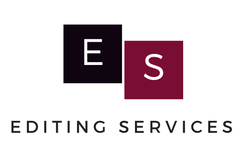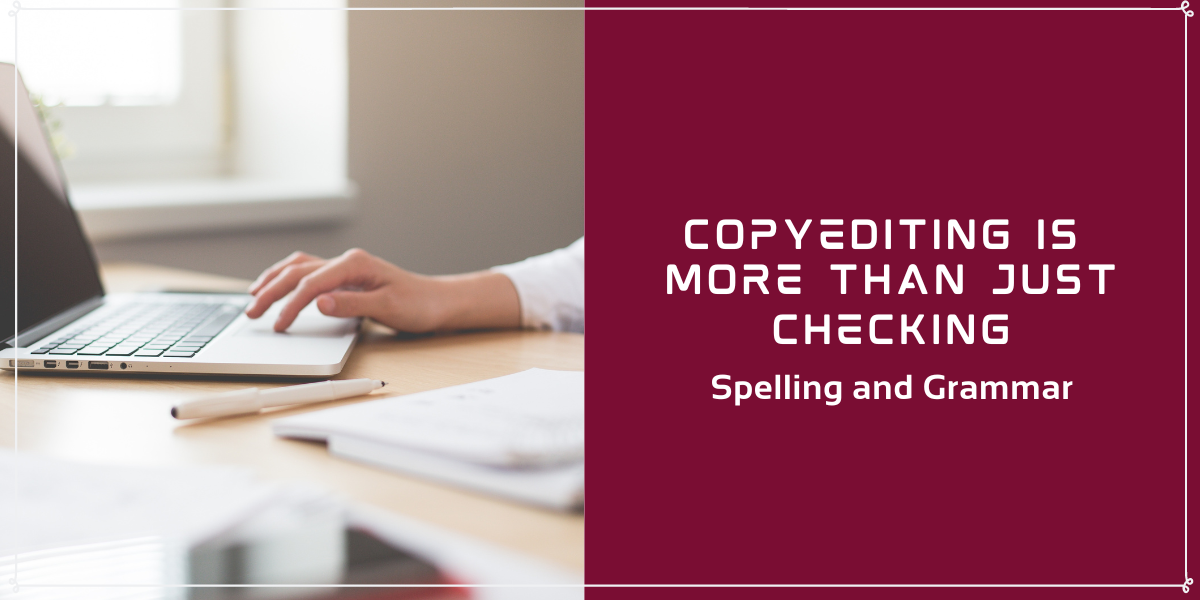E.S. Editing BlogUseful tips about editing, writing, creativity, reading, and the publishing industry
|
|
Chances are when you think about editors, you picture some version of the mean English teacher you had in seventh grade, who viciously wielded their red pen and gave you a bad grade. You might think of someone who rigidly adheres to the rules and will “slash” your manuscript to smithereens, only to rewrite your story based on their own preferences. Not cool…
I get it if that’s what comes to mind. But I’m here to help you see that copyediting is more than just fixing commas and spelling/grammar errors. There’s a much wider scope to copyediting, and it serves a crucial role in the publishing process. Plus, I promise most good editors are experienced enough to know when to apply the rules and when to let them go. That is, they’ve developed a flexible mindset that allows them to make sure the manuscript is up to professional standards while maintaining the author’s voice and vision. Yes, we follow the Chicago Manual of Style as fiction editors, but there are lots of times when author’s preferences can and should take precedence, especially in SFF manuscripts with unique languages and word choices. So let’s dive in and see what else copyediting involves. The Essential Skills of Copyediting
First off, there’s a kernel of truth in that idea of the scary red pen (or red-lining in Word docs). It’s true that fixing overt typos and spelling and grammar errors falls within the purview of copyediting. We do those things, yes. However, like with many technical skills that can look straightforward from the outside, there’s so much more to it than meets the eye.
The 4 Cs Copyeditors are trained to focus on the 4 Cs: clarity, coherency, consistency, and correctness—all in the service of communication. (That’s from The Copyeditors’ Handbook by Amy Einsohn, which is one of the main copyediting textbooks used in a lot of editing certificate programs and online courses.) It’s best practice that copyediting happens after the big-picture stuff, like plot, characters, theme, scene order, etc., is all settled. Now it’s time for the copyeditor to come in at the sentence level and do their detailed work. 3 Types of Editing
For more on the different levels of editing, check out my blog post about it. It’s also important to remember that copyediting can include slightly different things within a traditional publishing or indie publishing context, so be sure to discuss with your editor exactly what they include in their copyediting service.
Many editors who work with indie authors do some version of a combined line and copyedit, which goes a bit deeper into sentence length/rhythm, cadence, and suggestions on how to avoid info dumps, too much stage direction, overuse of filter words, and problems with showing vs. telling. Line editing can also include strengthening action beats and making sure dialogue is grounded in the environment (and characters are not just talking heads). Here are other things copyeditors will be looking for as they edit your manuscript (other than adding or deleting commas :P):
Suggest how to remove excessive filter words. Line editors suggest how to revise sentences with words like “noticed,” “realized,” “felt,” “thought,” and “wondered” to make the writing more immediate and immersive for the reader. Filter words filter the experience through the viewpoint character, instead of letting the reader experience what’s happening as the character experiences it. Check out this blog post (scroll down to #2) for more examples.
Tighten up sentences for better flow. Editors point out places with lots of stage direction that bog down scenes. Sometimes too much detail about where characters are looking or how they get from A to B can make the reading experience less immersive (therefore potentially more boring). Next time you’re reading a novel, take note of how the author moves the characters. Sometimes scenes will end and pick up somewhere else! You don’t always have to explain how the character moved from place to place. Editors also look for any extra words or redundant expressions that can weigh down writing.
Copyeditors keep track of details in a style sheet to ensure consistency from start to finish. Think of a style sheet as a ‘second brain’ for all the style decisions and details that make up every character, location, and main plot point of your book. It’s the document that allows us to keep track of spellings, characteristics like hair/eye color, tattoos, timeline details—all in an effort to make sure everything is consistent.
Anything that can be contradicted later is tracked, so that the details, capitalization, hyphenations, and so on are consistently applied over the course of the manuscript. It’s hard to keep all that straight without writing it down. That’s what the style sheet is for, and it’s invaluable especially for a series! Ask your prospective editor if they will be providing you a style sheet. Details, Details, and More Details!
Copy and line editors are serious about technical details! Our job requires a fine-tuned attention and ability to focus, well-honed curiosity to track down information in style and reference guides, and the ability to ask important questions and deliver feedback tactfully and constructively in our editorial letters. As you can see, many overlapping skill sets converge in a good copyeditor that go far beyond their knowledge of punctuation.
The myriad of small checks we do is hard to list out of context, but think of it like reading while notifications are going off all over the place: ping, look that word up in Merriam-Webster; ping, that word is hyphenated but double-check in the Hyphenation Table in the Chicago Manual of Style; ping, front-load this sentence for clarity; ping, make note of this character’s hair color in the style sheet. And on and on. The copyeditor is that curious, inquisitive person who works behind the scenes to check on spellings, grammar rules, but also word choice, sentence structure, cadence and syntax. They notice word echoes, repetition, and gnarly run-on sentences or points of confusion. They ask astute questions and pinpoint inconsistencies that can add up over the course of the manuscript, taking the reader out of the story. They manage all those details and decisions by tracking them in a style sheet so they can be applied consistently throughout the document. Like I mentioned in my last blog post, copyeditors act like continuity directors “on set.” It’s an important task that is especially foregrounded when things are missed, like when character names change or timelines don’t add up properly. Which is hard to avoid after so many drafts! Cultivating a Flexible Mindset
The stereotype of the copyeditor, slashing the author’s story in service of the “rules,” sadly exists for a reason; there are lots of editors, especially at the beginning of their journey, myself included, who wield what my fellow fiction copyeditor Amy Schneider calls “the grammar hammer.” This happens when they rely on a rigidly prescriptive view of language—there are “the rules” and they feel compelled to apply them no matter what. They have strong pet peeves and consider it their job to ferret out all errors of any kind, period. But in fiction, this is generally a heavy-handed, unwelcome approach.
To temper this, I like to cultivate a flexible mindset. You learn (and practice/cultivate) when to let things go, when to query the author, and when to dig deeper to understand why the author has made certain choices. In service of those 4Cs, the copyeditor is there to, yes, apply the conventions of a style guide (in fiction it’s the Chicago Manual of Style, or CMOS), and that includes guidance around capitalization, hyphenation, abbreviations, numbers, and other technicalities. But it’s also important to keep in mind that the author’s story becomes its own style guide that can supersede CMOS in certain regards: for example, how characters talk, some sci-fi/fantasy capitalization choices, that kind of thing. Summary
I like to think of the copyeditor as the bridge between the author and their readers. It’s our job to keep an eagle eye on so many sentence-level details, to immerse ourselves in the imagined world, and point out any pitfalls readers may have. Of course commas and typos are involved, but that’s just the beginning!
The copyeditor is there to polish and ensure the integrity of the author’s imagined universe, not impose their own preferences/pet peeves. Every consideration is us advocating for the future readers’ seamless experience, and this will necessarily include respecting the author’s vision and style. The goal is for readers to forget they’re reading, so in that way editors are integral creative collaborators. If you’re looking for a meticulous copyeditor for your novel or series, I’d love to work with you! Get in touch and tell me about your project. I specialize in science fiction, fantasy, and horror genres.
Read More
How to connect with me:
|
Proud member of
|
Copyright © 2024 E.S. Editing Services
Privacy Policy |






Leave a Reply.